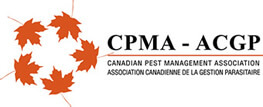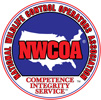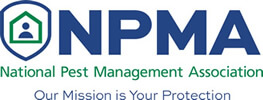Professional Spider Exterminator – Calgary – Spider Treatment Service
403-475-6523
Peregrine Pest Control – Spider Removal – Calgary & area
All our spider treatment technicians are licensed applicators in the province of Alberta.
Peregrine Pest Control is Quality Pro Certified and ISN Certified.
*Our Calgary spider removal team has 60+ years of combined experience
Check out the Peregrine Pest Control team here
WHAT TO LOOK FOR
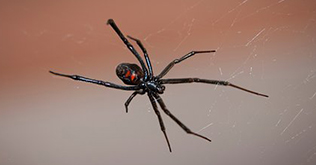
Black Widow Spiders: Black Widow Spiders can be deadly to people and pets, so if you think you have black widow spiders in or around your property, call us right away. Interestingly, males do not bite. The females usually only bite when they are protecting their eggs and at other times will usually try to escape. Black widow spiders lay their eggs close to the web and are usually found in piles of fallen branches or trash, or underneath garden furniture and outhouse seats. The young spiders disperse soon after hatching. After mating, the female black widow often eats the male (hence the name), whose sperm she stores and then uses to produce future egg sacs without mating. Female black widow spiders can live for up to three years.
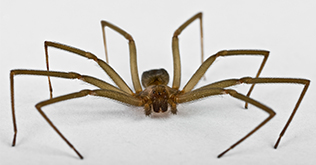
Brown Recluse Spiders: Brown Recluse Spiders do not seek to bite people. The bite is usually accidental. The spider crawls into a shoe, clothing, or beds; a person then puts on the clothing or lies on the spider in bed. Brown recluse spiders have only one defence — and that is to bite. The bite has an especially nasty effect on people, often resulting in open, ulcerating sores. Left untreated, such bites often become infected and significant tissue necrosis can occur. It is always best to seek medical attention, preferably from a dermatologist, if you think you may have a spider bite. This is especially true in areas where brown recluse spiders are common.
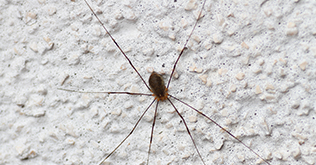
Daddy Long-Legs Spider: Daddy Long-Legs Spider can be found on tree trunks and open ground. They are found throughout North America. On cool afternoons, adult daddy long legs spiders often climb trees or sides of buildings, seemingly to benefit from residual heat of the sun. A warm knothole may attract dozens of daddy-long-legs, who stand close together with legs interlaced all night.
HOW TO IDENTIFY SPIDERS
Black Widow: Spiders are small. Females measure up to 3/8 of an inch and have rounded abdomens often with two horizontal red stripes or with red hourglass markings on their lower half. Males are even smaller, measuring only 1/8 of an inch. Male abdomens are elongated with red and white markings along their sides, and they have much longer legs in proportion to their body size than the female.
Brown Recluse Spiders: may grow to have a body about 5/8 of an inch in length and a leg span of about 1 and 1/2 inches in diameter. They are usually light brown but may be darker in some specimens. The key identifying characteristics are the six eyes arranged in three pairs at the front of the head area and the fiddle-shaped marking on the back. The brown recluse spider is often called the “violin” spider or “fiddleback” spider because of the distinctive fiddle-shaped marking on top of its cephalothorax (head end to which the legs are attached).
Daddy Long-Legs Spiders: are approximately 1/8 – 1/4 of an inch (4-6 mm) in size and have long, thin legs. Their body is reddish brown and the legs are dark with prominent paler coxae. Daddy long-legs eat small insects and decaying organic matter. Daddy long-legs have one generation per year. When warm weather arrives, the young creep out and grow slowly. Normally they mature in summer, then mate without courtship.
OUR SOLUTION
Solving a spider problem can be hard work. While most clients would like to have zero spiders on their property, managing expectations is key. You should expect a significant reduction in spider populations with the right pest control approach. At Peregrine, our pest control service technicians focus on treating areas where spiders congregate on the exterior of the property. This includes treating the exterior perimeter of the structure. After this we treat under decks, porches, sheds, behind garages, garden beds that are attached to the structure. Liquid chemicals, cobweb brooms, and commercial pest control vacuums are the right combination of tools.
COMMON CONCERNS
Why do I get some many spiders in my basement?
It has been stated that there is always a spider within 3 feet of us. What a disturbing thought. Keeping this in mind, spiders find homes in the most amazing, small spaces. During the summer months, spiders make their way through the exterior walls of structures and eventually turn up in basements, particularly in basement ceilings where there is warm insulation to nest in and nice dark areas to call home.
Why do you primarily treat the exterior of my residence for spiders?
The reason that, at Peregrine, we focus on treating the exterior of a structure is that the goal is to eliminate spiders before they have an opportunity of entering your residence. This is the most efficient and effective approach. On the interior of a structure, we always recommend using a bright flashlight and using a vacuum cleaner to remove any visible cobwebs or spiders. Repeat twice, about two weeks apart, and you can expect to remove over 95% of spiders on the interior of the structure.
How long do I have to leave my premises for?
At the time of service, your pest control service technician will review any specific re-entry times. In general terms, once a chemical applied to the exterior of a structure is dry, it is safe to walk on. We always recommend wearing shoes outside for the first day. (Safety first!) Regarding the interior of a structure, minimum re-entry time is six hours.
Professional Spider Exterminator – Calgary – Spider Treatment Service
403-475-6523
Peregrine Pest Control – Spider Removal – Calgary & area
All our spider treatment technicians are licensed applicators in the province of Alberta.
Peregrine Pest Control is Quality Pro Certified and ISN Certified.
*Our Calgary spider removal team has 60+ years of combined experience
Check out the Peregrine Pest Control team here
Overall rating of 350+ Google reviews
4.8 out of 5 STARS













